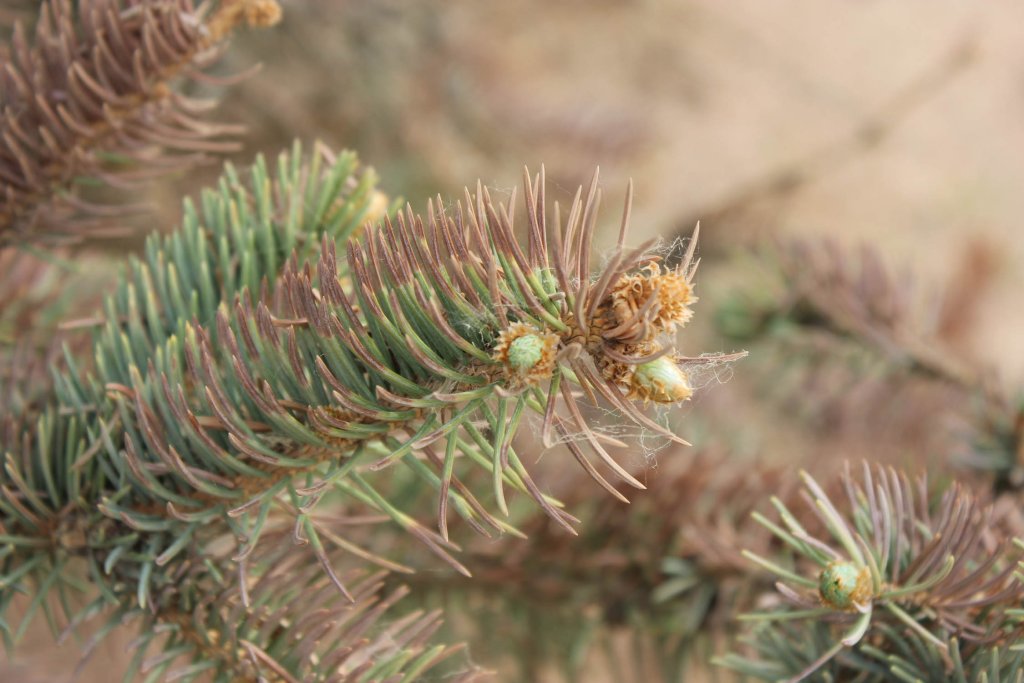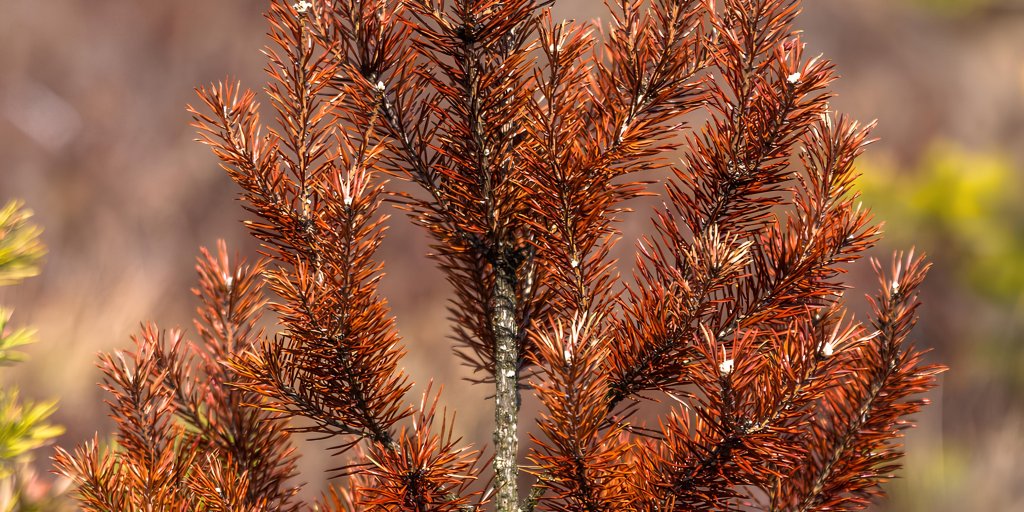If you have pine trees in your yard or nearby and notice their needles turning brown, understanding the Types of Pine Trees and Their Characteristics can be the first step in diagnosing the problem.
While pine trees generally boast green needles, a shift to brown signifies an issue, highlighting the importance of recognizing the specific characteristics of your pine trees.
Brown needles can cause signal stress or damage to the tree. It’s important to figure out why and how to fix them. Pine trees are usually green, but when they turn brown, something can be wrong. This can happen for a few reasons, and we’ll explain them here.
We’ll see some reasons so you can figure out why your pine trees are turning brown and how to keep them healthy and green.
Environmental Causes of Pine Tree Browning

1. Pine Needle Fungus
Pine needle fungus, also known as Dothistroma needle blight, is a fungus that often turns pine trees brown. This fungus starts when rain or water carries its small spores to pine tree needles. Once it infects the needles, they turn brown and get red or yellow edges.
These brown spots grow and take over more of the needle. If you don’t do anything about it, the tree can lose many of its needles, making it weaker and less healthy.
2. Lophodermium Needle Cast
Lophodermium needle cast is a fungal disease that turns pine trees brown. It’s caused by a fungus called Lophodermium seditiosum and mainly affects the older needles of pine trees. Unlike some other diseases, it’s more common in cooler and wetter climates. The disease spreads when the wind or rain and land on pine needles carries fungal spores.
Once infected, the needles develop small black structures that release more spores, continuing the infection cycle. Initially, the infected needles turn yellow, brown, and eventually fall off.
As the disease worsens, it weakens the tree, making it less able to make food through photosynthesis, which further contributes to the browning of the tree.
3. Brown Spot Needle Blight
Brown spot needle blight is a fungal disease that turns pine trees brown. It mainly targets the needles of different pine tree types and is caused by the fungus Mycosphaerella dearnessii.
This disease, such as warm and humid weather, is common in places with such climates. It spreads when rain or wind carries fungal spores to pine trees, where they infect the needles. Infected needles get small brown or purplish spots, which can grow and cover much of the needle.
As the disease worsens, the needles turn entirely brown and fall off, making the tree look brown.
Simple Tips to Help a Struggling Pine Tree

1. Give It More Water
If your pine tree looks sick, the first thing to do is to check if it’s getting enough water. Pine trees really need water, especially when it’s dry outside.
But here’s the trick: when you water it, make sure it goes deep down into the soil where the tree’s roots are. It’s also a good idea to put some mulch around the bottom of the tree. This keeps the soil moist and stops the water from disappearing too quickly.
Just be careful not to give it too much water because that can make the roots rot. So, the main thing is to water your pine tree regularly and not do too much or too little to help it when it’s not doing well.
2. Trim Away Sickly Branches
To keep your pine tree healthy, look closely at it for any branches that don’t look good. They might be brown, sick, or have bugs or fungi on them.
If you find any, be gentle and use sharp, clean tools to cut them off neatly. This helps stop the issue from spreading.
When you do this right, it doesn’t just get rid of the bad branches but also helps your tree grow well. It lets sunlight and air reach the middle part of the tree where it needs it.
3. Use Pest or Fungus Control
If you see any problems, such as bugs or diseases, on your pine tree, you should take steps to fix them.
You can ask a local tree expert or plant store for help picking the right things to use, such as bug sprays or fungus treatments.
Follow the directions carefully to avoid hurting the tree or the environment. It’s also a good idea to do things that stop these problems from happening in the first place, like keeping the tree area clean and giving the trees enough space to breathe.
Conclusion
When your pine trees start turning brown, it’s important to know a few key reasons for this issue. First, not giving them enough water, especially during dry periods, can be a big factor. Bugs like bark beetles and tree diseases can harm your pine trees.
Regularly checking for these issues and dealing with them quickly can prevent damage. To keep your pine trees green and growing. Remember to water them and watch out for pests and diseases. Check their soil quality and protect them during rough weather.
Following these steps will help your pine trees stay green and lively for years.

